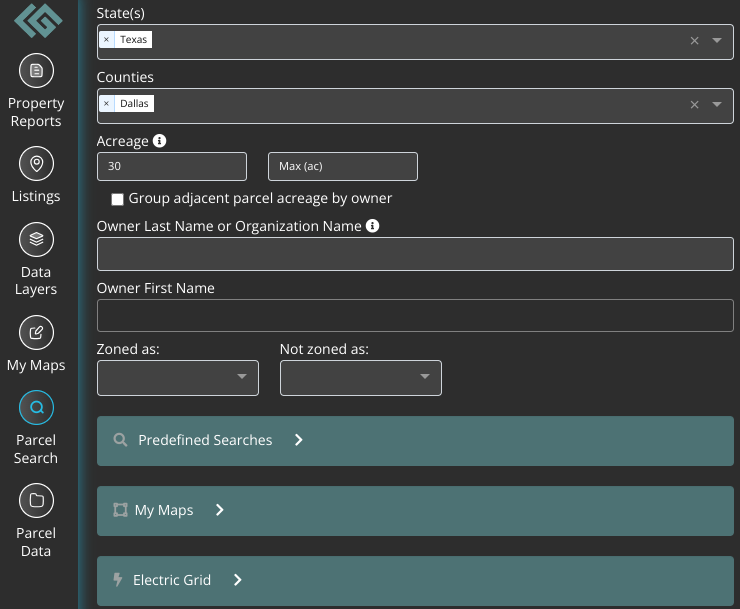
As the solar industry grows, many prospective property owners are discovering that investing in land suitable for solar leasing is a lucrative opportunity that can provide a steady revenue stream over a long-term lease agreement. Identifying the perfect property for a solar farm can be a challenging and time-consuming process, but that's where LandApp and LandGate's marketplace comes in. LandApp simplifies the search for land suitable for solar leasing by providing powerful tools to analyze property features, location, and zoning requirements. With LandApp, you can make informed decisions and connect with opportunities that align with your investment goals.
Understanding Solar Leasing
Solar leasing is a type of agreement between a solar developer and a landowner. The developer leases all or a portion of the land from the owner for the purpose of installing and operating a solar energy system. The lease typically lasts for 20-40 years with an option to extend, and the developer pays rent to the landowner for the use of their land.
Benefits of Solar Leasing
There are many benefits of leasing land for solar farms, including:
Steady income: The rent paid by the developer can provide a steady stream of income for landowners over the duration of the lease agreement. When landowners get paid for a solar lease on their land, annual lease payments generally range from $700-2,000 per acre per year.
Minimal risk: As the developer is responsible for installing and maintaining the solar energy system, landowners do not have to worry about any upfront costs or ongoing maintenance expenses.
Environmentally-friendly investment: By leasing their land for solar development, landowners are contributing to the growth of renewable energy and reducing their carbon footprint.
On the other hand, developers benefit from solar leasing by gaining access to suitable land without having to purchase it outright. This allows them to invest in multiple projects and spread out their resources.
What Makes Land Good for Solar Farms?
Key factors that make land good for solar farms include acreage, close proximity to energy grid infrastructure, available government incentives for solar farm development, and high solar irradiance. Generally, at least 30 acres of buildable land free from topographical challenges and flood zones is ideal for utility-scale solar farms, while smaller parcels (5-10 acres) suit community solar farms. Additionally, land near electrical infrastructure like substations and transmission lines is more attractive for solar farms due to lower interconnection costs. Specifically, properties located within 4 miles of the nearest substation and adjacent to transmission lines is ideal.
Solar irradiance and the amount of sunlight a location receives are also among some of the critical factors in determining the success of a solar farm. Solar panels depend on sunlight to generate electricity, so areas with high levels of solar irradiance- measured in kilowatt-hours per square meter per day- can produce more energy and maximize efficiency. Regions with consistent, year-round sunshine, such as those in sunnier climates, are particularly advantageous for solar farm development. Conversely, locations with frequent cloud cover or limited daylight hours during certain seasons may yield lower energy outputs, making them less suitable. By selecting areas with optimal sunlight exposure, developers ensure better return on investment while contributing more effectively to the renewable energy grid.
How to Find Land Suitable for Solar Leasing
Using LandGate's marketplace, individuals interested in purchasing land to lease for solar farms can find suitable properties using the qualifications listed above. The first step in finding land suitable for a solar farm is to determine where you'd like to purchase property. Texas and California lead the country in solar energy production, but solar farms are located across the country.
In this example, let's say that I'm interested in purchasing land in Texas for a utility-scale solar farm. Noting that utility-scale solar developers usually search for properties that are at least 30 acres, I'll enter in the minimum acreage requirement as 30 acres. If you have a certain budget in mind, you can enter this information into the Price fields to further narrow your search.
After applying your search filters, you'll be provided with a list of properties listed for sale that fit the specified criteria. Each listing on LandGate's marketplace is embedded with proprietary solar value index scores containing a specific solar lease estimate, proximity to energy grid infrastructure, buildable acreage, and more to help you evaluate the property's potential for solar energy at a glance. The value index scores are scored on a scale of 0-100. Simply click on the Solar Value Index score and for more information:
As you're evaluating available properties on LandGate's marketplace, you can favorite listings to save them to your account and refer back to them later by clicking on the blue star icon at the bottom right corner of the listing details. You can also save searches by clicking 'Save Search' and set up email notifications to get notified when a new listing is posted that fits your specific criteria.
How to Evaluate the Solar Potential for Any Property Using LandApp
If you're interested in evaluating property potential for land that isn't listed on LandGate's marketplace, you can utilize LandApp's Property Reports and Parcel Search tools.
Property Reports
Using LandApp's unlimited property reports, you can evaluate the solar potential of any property nationwide. Select the Property Reports module and plug in the property address, parcel ID, or owner name into the field in the upper right corner of your screen to find a specific property on LandGate's map and create a property report. Then, navigate to the Solar Value Index Score to see the property's buildable acreage, estimated solar lease value, and proximity to energy grid infrastructure.
Parcel Search
The Parcel Search function in LandApp is another way that you can find off-market properties suitable for solar leasing. This route is similar to using the search filters in LandGate's marketplace, except you can also filter by buildable acreage and proximity to energy grid infrastructure, and the properties provided are not listed for sale on LandGate's marketplace. Like the example above, let's say I'm interested in purchasing at least 30 acres of land in Dallas County, Texas suitable for solar leasing.
After entering the desired location and acreage filters, I can use the Electric Grid and Solar categories to further narrow the search. The Electric Grid category allows you to provide your desired proximity to energy grid infrastructure, while the Solar category allows you to enter your desired buildable acreage.
I can also use the Index Filter to find and filter properties using LandApp's solar value index scores. Simply select the Index Filter category and provide your desired solar value index score range:
After clicking the blue Search button in the bottom right corner of the Parcel Search module, you'll be provided with a list of properties that fit your specified criteria.
How to Lease Land for a Solar Farm
By following this guide, you can use LandGate's marketplace and LandApp to successfully find properties suitable for solar farms. After purchasing a property, you can then list it for lease for a solar farm on LandGate's marketplace at no cost and with no obligation to accept any offers. Although there is no guarantee that you'll receive offers, listing on LandGate's marketplace is the best way to present your property to a nationwide network of solar developers actively planning new projects and seeking suitable sites to lease.










